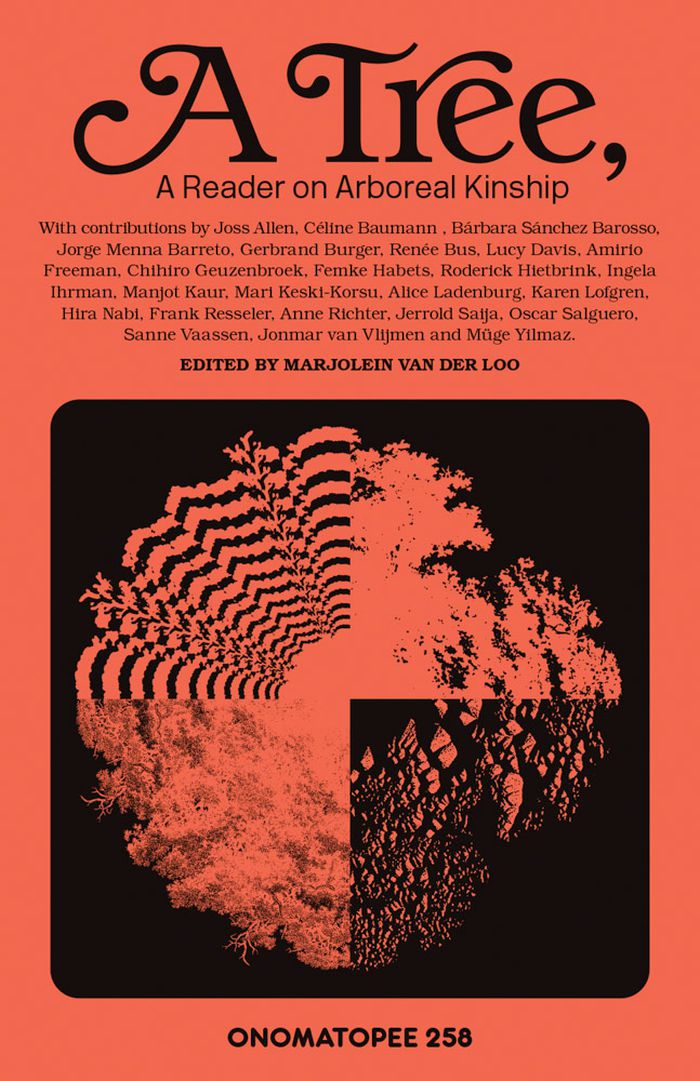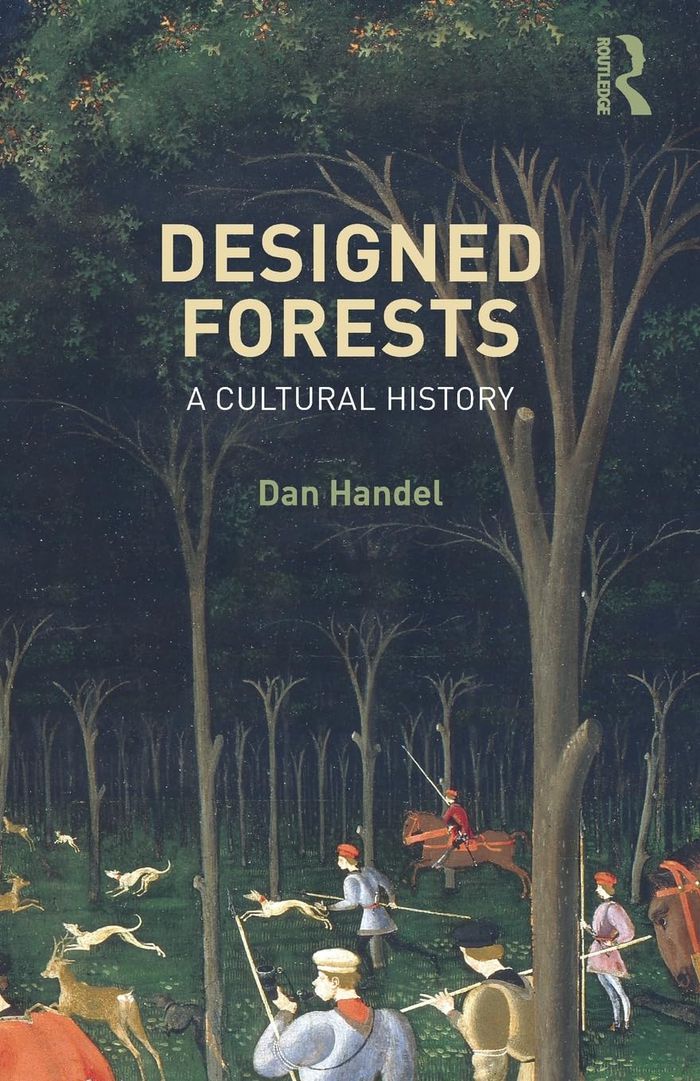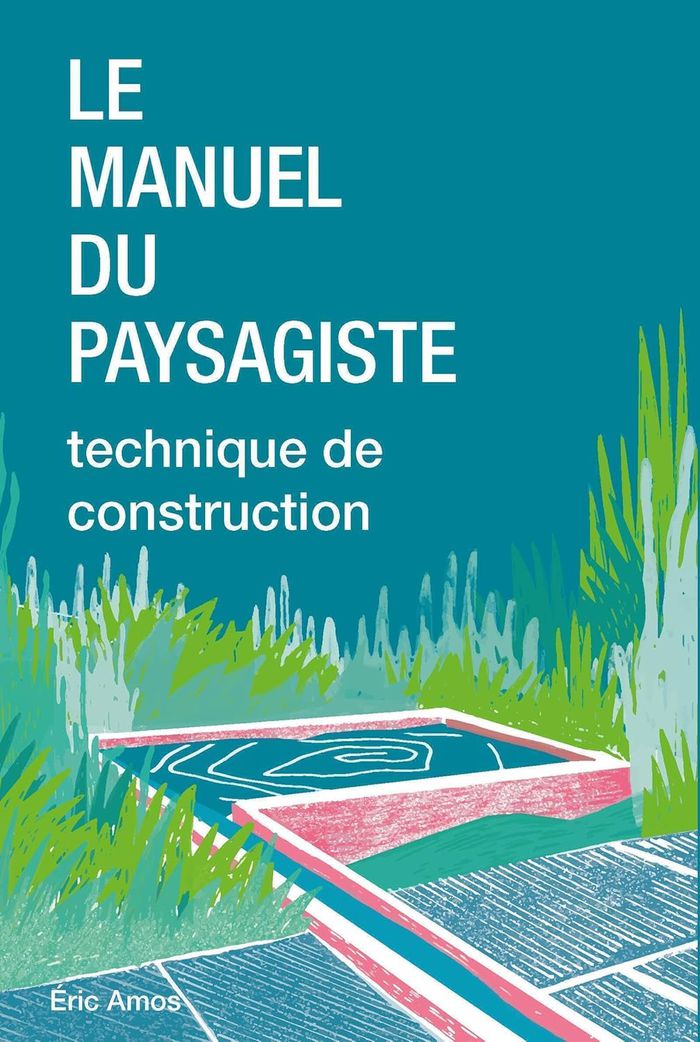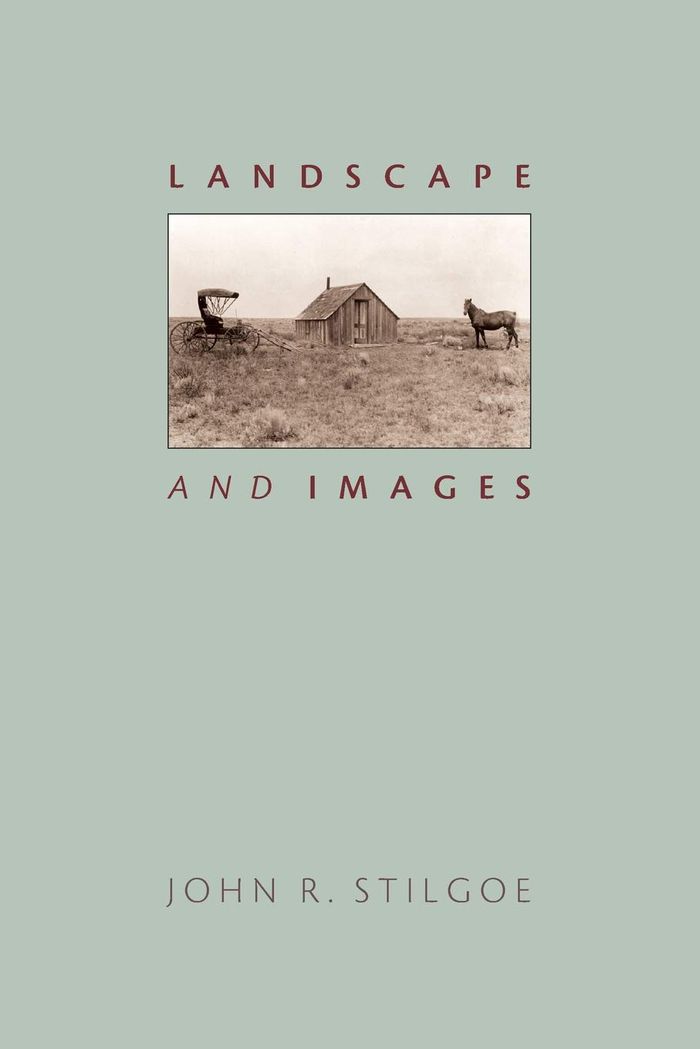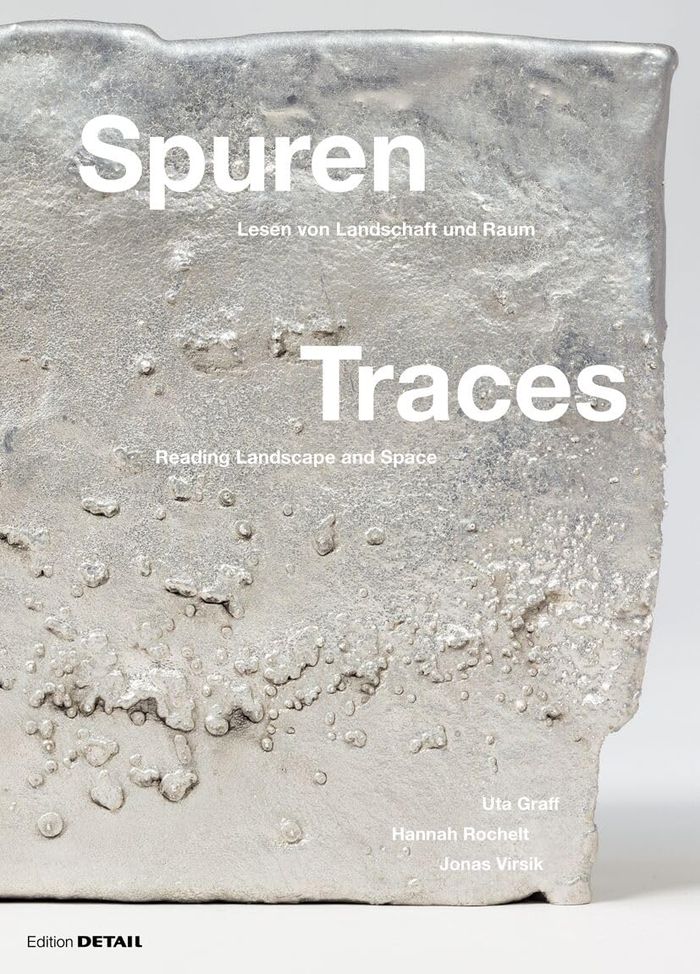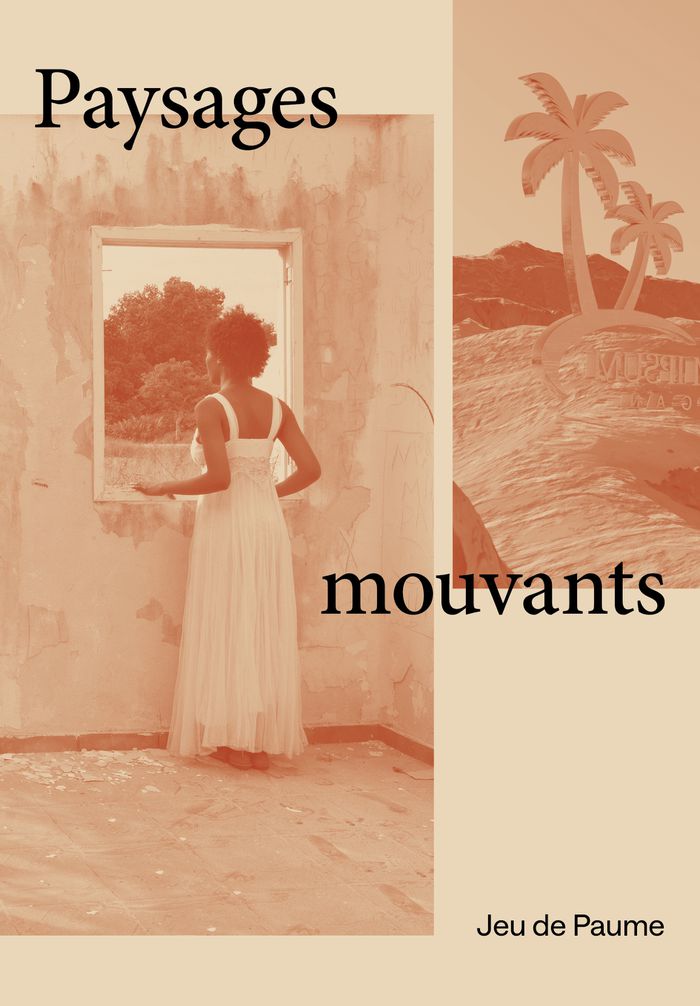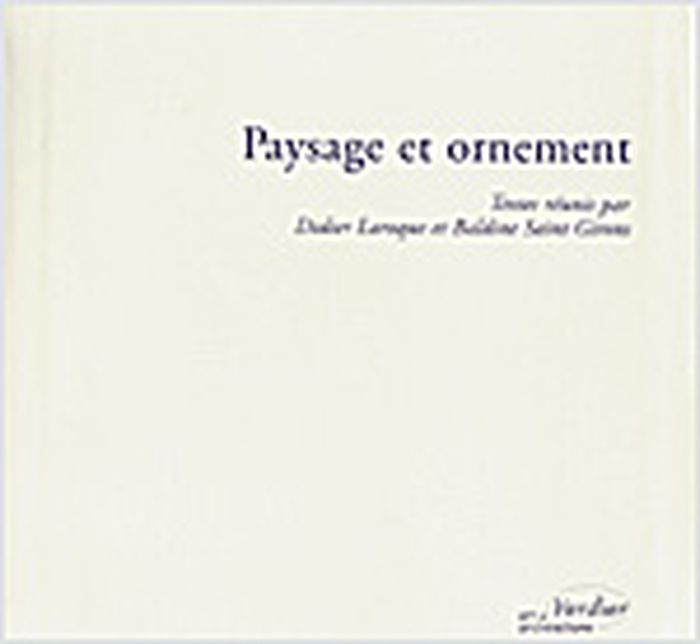$28.95
(available in store)
Summary:
"A tree," is about vegetal agency, plant knowledge, and the interaction between plants and people, with a specific focus on trees. This book comprises a variety of contributions that take a multitude of approaches to tree life, from sensory to ancestral, intimate to speculative. Taking the time to think about trees through imagination, art, music, storytelling, poetry,(...)
A tree: A reader on arboreal kinship
Actions:
Price:
$28.95
(available in store)
Summary:
"A tree," is about vegetal agency, plant knowledge, and the interaction between plants and people, with a specific focus on trees. This book comprises a variety of contributions that take a multitude of approaches to tree life, from sensory to ancestral, intimate to speculative. Taking the time to think about trees through imagination, art, music, storytelling, poetry, and images, the works in this reader share the aim of nurturing and furthering dialogue that exercises arboreal kinship. Moreover, the contributions inspire us to move beyond large systems of oppression and towards exorcizing anthropocentrism, capitalism, individualism, heteronormativity, and coloniality, by learning from and with tree time.
Landscape Theory
$66.95
(available in store)
Summary:
''Designed Forests: A Cultural History'' explores the unique kinship that exists between forests and spatial design; the forest’s influence on architectural culture and practice; and the potentials and pitfalls of “forest thinking” for more sustainable and ethical ways of doing architecture today. It tackles these subjects by focusing on architecture’s own dispositions,(...)
Designed forests: A cultural history
Actions:
Price:
$66.95
(available in store)
Summary:
''Designed Forests: A Cultural History'' explores the unique kinship that exists between forests and spatial design; the forest’s influence on architectural culture and practice; and the potentials and pitfalls of “forest thinking” for more sustainable and ethical ways of doing architecture today. It tackles these subjects by focusing on architecture’s own dispositions, which stem from an ecology of metaphor that surrounds its encounters with the forest and undergird ideas about Nature and natural systems. The book weaves together global narratives and chapters explore a range of topics, such as the invention of forest plans in colonial India, the war waged on the jungles of Vietnam, economic land use concepts in rural Germany, precolonial ecological pasts in Manhattan, and technologically saturated forests in California. This book is essential for landscape architects, urbanists, architects, forestry experts, and everyone concerned with larger environmental contexts and the ever-evolving relationship between nature and culture.
Landscape Theory
Le manuel du paysagiste
$69.95
(available to order)
Summary:
Véritable scénographe de l'espace public, le paysagiste construit des liens, sensibles et compréhensibles, entre l'environnement et ses usagers. Sa pratique recouvre à ce titre de nombreux aspects tant opérationnels que sensoriels, et repose sur un savoir-faire expert exigeant de multiples connaissances scientifiques et techniques. Conçu sous la direction d'Eric Amos,(...)
Le manuel du paysagiste
Actions:
Price:
$69.95
(available to order)
Summary:
Véritable scénographe de l'espace public, le paysagiste construit des liens, sensibles et compréhensibles, entre l'environnement et ses usagers. Sa pratique recouvre à ce titre de nombreux aspects tant opérationnels que sensoriels, et repose sur un savoir-faire expert exigeant de multiples connaissances scientifiques et techniques. Conçu sous la direction d'Eric Amos, professeur en technique et paysage à la Haute école du paysage, d'ingénierie et d'architecture de Genève (HEPIA), ce Manuel du paysagiste se pose comme une référence en matière de construction de parcs, de jardins et d'aménagement d'espaces publics. Du terrassement à l'élaboration d'abris, en passant par la gestion des eaux et la conception d'escaliers, il propose une grammaire commune et un parcours abondamment illustré à travers les étapes, les techniques et les normes actuelles des réalisations d'extérieurs. Clair, pratique et synthétique, ce guide sans précédent s'adresse autant aux étudiants et praticiens du paysage, qu'aux non-spécialistes intéressés par ces questions. Il constituera un compagnon indispensable pour alimenter leur réflexion et accompagner leur prise de décision.
Landscape Theory
Landscape and images
$54.95
(available in store)
Summary:
John Stilgoe is just looking around. This is more difficult than it sounds, particularly in our mediated age, when advances in both theory and technology too often seek to replace the visual evidence before our own eyes rather than complement it. We are surrounded by landscapes charged with our past, and yet from our earliest schooldays we are instructed not to stare out(...)
Landscape and images
Actions:
Price:
$54.95
(available in store)
Summary:
John Stilgoe is just looking around. This is more difficult than it sounds, particularly in our mediated age, when advances in both theory and technology too often seek to replace the visual evidence before our own eyes rather than complement it. We are surrounded by landscapes charged with our past, and yet from our earliest schooldays we are instructed not to stare out the window. Someone who stops to look isn’t only a rarity; he or she is suspect. "Landscape and images" records a lifetime spent observing America’s constructed landscapes. Stilgoe’s essays follow the eclectic trains of thought that have resulted from his observation, from the postcard preference for sunsets over sunrises to the concept of "teen geography" to the unwillingness of Americans to walk up and down stairs. In Stilgoe's hands, the subject of jack o’ lanterns becomes an occasion to explore centuries-old concepts of boundaries and trespassing, and to examine why this originally pagan symbol has persisted into our own age.
Landscape Theory
$92.00
(available in store)
Summary:
How can buildings be integrated into the landscape? How is architecture conceivable in flood-prone areas or parched landscapes? The title ‘Traces’ addresses these and other questions. It thematises how ‘reading’, observing and recording space and landscape determine an architectural design in different landscape contexts. It provides insights into an approach to(...)
Landscape Theory
December 2024
Traces: Reading of landscape. Spuren: Lesen von landschaften
Actions:
Price:
$92.00
(available in store)
Summary:
How can buildings be integrated into the landscape? How is architecture conceivable in flood-prone areas or parched landscapes? The title ‘Traces’ addresses these and other questions. It thematises how ‘reading’, observing and recording space and landscape determine an architectural design in different landscape contexts. It provides insights into an approach to architectural design. Using selected works created at the Chair of Design and Creation under the direction of Prof. Uta Graff at TUM Munich, certain aspects take centre stage. Colour illustrations of artefacts and models, project descriptions and essays document the various issues.
Landscape Theory
Le paysage est un projet
$51.95
(available to order)
Summary:
Ménager les territoires. Les co-paysagistes. Le projet de paysage est l'art de planifier, d'aménager et de gérer les territoires ruraux, périurbains et urbains. Il a vocation à initier des espaces vivants, ouverts à tous dans un équilibre des formes, des horizons et des milieux hérités d'une histoire et d'une géographie chaque fois singulières. L'examen des productions(...)
Le paysage est un projet
Actions:
Price:
$51.95
(available to order)
Summary:
Ménager les territoires. Les co-paysagistes. Le projet de paysage est l'art de planifier, d'aménager et de gérer les territoires ruraux, périurbains et urbains. Il a vocation à initier des espaces vivants, ouverts à tous dans un équilibre des formes, des horizons et des milieux hérités d'une histoire et d'une géographie chaque fois singulières. L'examen des productions des paysagistes sur plus d'un siècle met en évidence un bilan qui entre en totale résonnance avec les enjeux écologiques et sociétaux de notre époque. À bien des égards, le projet de paysage est ancré dans les perceptions, les pratiques et le vécu des populations. C'est pour répondre au rendez-vous de notre époque que se sont rassemblés plus de 80 auteurs, paysagistes en majorité, praticiens ou chercheurs, enseignants ou observateurs critiques, tous impliqués dans la pratique du projet de paysage. Le présent livre, décliné en trois tomes, constitue la somme la plus complète sur la théorie et la pratique du projet de paysage.
Landscape Theory
Paysages mouvants
$72.95
(available to order)
Summary:
Pensée comme un récit collectif et pluridisciplinaire, la deuxième édition du festival du Jeu de Paume intitulée « Paysages mouvants » convoque de nouveaux imaginaires liés aux espaces naturels, les confrontant aux archétypes – la jungle, l'oasis, le ciel, le désert, la forêt – et aux symboles intemporels que des siècles de représentation ont contribué à ancrer dans(...)
Paysages mouvants
Actions:
Price:
$72.95
(available to order)
Summary:
Pensée comme un récit collectif et pluridisciplinaire, la deuxième édition du festival du Jeu de Paume intitulée « Paysages mouvants » convoque de nouveaux imaginaires liés aux espaces naturels, les confrontant aux archétypes – la jungle, l'oasis, le ciel, le désert, la forêt – et aux symboles intemporels que des siècles de représentation ont contribué à ancrer dans l'inconscient collectif. Le catalogue publié à cette occasion se compose de deux livres assemblés sous une même couverture. Le premier réunit les contributions d'écrivain·e·s invité·e·s à imaginer un récit inspiré par un paysage, allant d'une traversée dans un monde de sensations à une plongée originelle dans le bassin du Congo, et poursuivant le voyage sur une embarcation en Patagonie, invitant à l'aventure au pied d'un glacier, suivant, enfin, les chemins de l'exil et du retour aux sources. Le second livre peut s'ouvrir en vis-à-vis du cahier des textes : il contient un portfolio des œuvres exposées, accompagnées de leurs notices respectives.
$16.95
(available to order)
Summary:
Les changements climatiques entrainent des bouleversements qui frappent l’imaginaire et font les manchettes. Mais certains impacts sont plus subtils, plus intimes: la perte de la neige en décembre, par exemple, ou celle de l’odeur d’une fleur qui embaumait jadis nos étés. Ce deuil des paysages disparus ou transformés a un nom: solastalgie. Dans cet essai, Catherine(...)
Les paysages intérieurs : Solastalgie, mémoire et territoire
Actions:
Price:
$16.95
(available to order)
Summary:
Les changements climatiques entrainent des bouleversements qui frappent l’imaginaire et font les manchettes. Mais certains impacts sont plus subtils, plus intimes: la perte de la neige en décembre, par exemple, ou celle de l’odeur d’une fleur qui embaumait jadis nos étés. Ce deuil des paysages disparus ou transformés a un nom: solastalgie. Dans cet essai, Catherine D’Amours ancre ce concept encore neuf dans le territoire québécois, sur les battures du Saint-Laurent comme dans les ruelles de Montréal. Portée par une quête de beauté, l’autrice mène une lutte contre l’amnésie collective, cette posture d’ignorance volontaire qui nous permet de mettre l’écoanxiété en sourdine. Elle tente ici de trouver un autre vocabulaire pour aborder cette crise qui nous remplit d’angoisse.
Landscape Theory
Paysage et ornement
$60.00
(available to order)
Summary:
Recueillant diverses études de théorie des arts et des lettres unis dans ce même objet de pensée, le présent ouvrage comporte quatre parties distinctes : une définition générale de son propos, où paysage et ornement sont évalués séparément et conjointement ; une réflexion sur l’architecture et le disegno dans leur relation à la nature et à l’espace ; une interrogation(...)
Paysage et ornement
Actions:
Price:
$60.00
(available to order)
Summary:
Recueillant diverses études de théorie des arts et des lettres unis dans ce même objet de pensée, le présent ouvrage comporte quatre parties distinctes : une définition générale de son propos, où paysage et ornement sont évalués séparément et conjointement ; une réflexion sur l’architecture et le disegno dans leur relation à la nature et à l’espace ; une interrogation portant sur la spécificité de la peinture de paysage, puis sur ses formes variées et sur le Land Art ; une étude enfin de paysages littéraires spécifiques : ceux de Hoffmann, de Hugo et de Pessoa.
Landscape Theory
$29.95
(available to order)
Summary:
Considérant la nature comme une chaîne nécessaire à comprendre et à apprivoiser, Gilles Clément décrit les phénomènes météorologiques comme la pluie ou le vent, non comme des ennemis mais comme des éléments naturels qu'il faut accueillir. Des phénomènes stupéfiants sont présentés. V. Schaefer, en 1946, montre, notamment, qu'ensemencer le nuage à l'aide de neige carbonique(...)
Nuages
Actions:
Price:
$29.95
(available to order)
Summary:
Considérant la nature comme une chaîne nécessaire à comprendre et à apprivoiser, Gilles Clément décrit les phénomènes météorologiques comme la pluie ou le vent, non comme des ennemis mais comme des éléments naturels qu'il faut accueillir. Des phénomènes stupéfiants sont présentés. V. Schaefer, en 1946, montre, notamment, qu'ensemencer le nuage à l'aide de neige carbonique produit aussitôt de la pluie.
Landscape Theory
